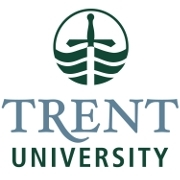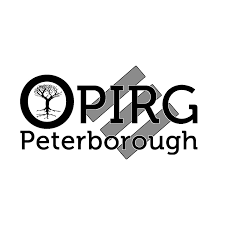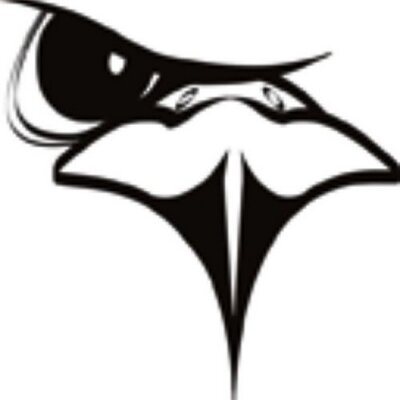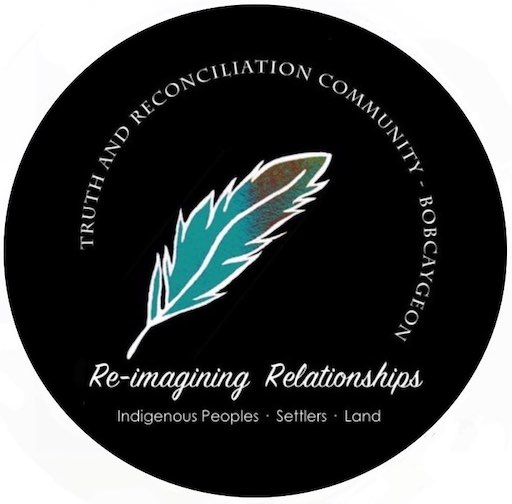Land Acknowledgement
Land Acknowledgement can be a hollow act, a superficial token or a meaningful reminder if done from a genuine place of caring. Many articles focus on the content of the Acknowledgement. The intent behind the words and the heartfelt connect to what is being said is the most important aspect and the place to begin formulating what you wish to say.
Canada is Indigenous territory. It is respectful protocol to acknowledge at the start of every gathering or meeting the particular nation(s) that had a relationship with the land you are on since time immemorial…
The process of writing a territory or land acknowledgment is as important a step toward reconciliation as saying or printing it.
Some Considerations regarding Land Acknowledgements
~ from a draft document by Peter Raymond (Trent Lakes)
What is a Territorial cknowledgement?
A territorial acknowledgement starts with the land: it’s about acknowledging the land we reside on and honouring the relationship between the land and the people living and thriving here long before settlers arrived.
It offers an opportunity to pay respect to traditional territories; be mindful of our collective role as stewards of the land; and build awareness of present-day Indigenous culture in the community.
Historical Background in the Kawartha’s
There is a 10,000 year record of human presence on the landscape we know as the Kawarthas. First Peoples migrated into the Kawarthas soon after the retreat of the great ice sheet. Their arrival has been documented by archaeologists on Rice Lake and Stony Lake near Burleigh Falls. These sites are some of the earliest human habitations found in Ontario. The Kawartha landscape held great spiritual and cultural meaning for the Indigenous populations (as it still does today). The Teaching Rocks or Petroglyphs near Woodview. Early evidence from about 2500 years ago has been uncovered on Chiminis (Big/Boyd) island in TRENT LAKES. A ceremonial centre from about 2000 years ago can be found at Serpent Mounds on Rice Lake. This background is part of why acknowledgements matter.
Context and Intent (More About Why this Matters)
Canada has entered into a period of reconciliation. The federal government’s Truth and Reconciliation Commission (TRC) report of December 2015 contained 94 calls to action to further reconciliation between Canadians and Indigenous Peoples. It contains the government’s commitment to a renewed nation-to-nation relationship with Indigenous Peoples based on recognition, rights, respect, co-operation and partnership. The TRC report has spurred organizations, businesses and provincial and municipal governments across the country to parallel the federal government’s commitment through a variety of initiatives that speak directly to their immediate communities.
Development of an Acknowledgement
The process itself can provide value for you and your group as it creates a path to new conversations that will serve to build deeper awareness and strengthen relationships within your community. You might start by looking at examples of how other groups and institutions have developed their land acknowledgements. There are several examples in the articles below. Understand that this is a living document that will continue to evolve over time as an ongoing work in progress. If you can consider meeting with First Nations leaders in the community to draft the territorial acknowledgement to learn what is important to them about this process.
Use of Acknowledgement
An acknowledgement can be used by a group at the opening of gatherings, meetings, celebrations and other official events, as deemed appropriate. The acknowledgement may be printed, spoken, projected, or posted on a website.
Practice
For a territorial acknowledgment to be meaningful, it is important that it is delivered with a sense of purpose and authenticity. Please note that various terms may be preferred over others, and that preferred terms can change over time. Any groups practice ought to be to honour First Nations people in the community with the terms by which they wish to be identified.
Example of a Draft Statement of Possible Land Acknowledgement for the Municipality of Trent Lakes
As we gather, we are reminded that the Municipality of Trent Lakes is situated on treaty land that is steeped in rich Indigenous history. As a Municipality we have a responsibility for the stewardship of the land on which we live and work. Today we acknowledge the Mississaugas of Alderville First Nation,Curve Lake First Nation, Hiawatha First Nation, Scugog Island First Nation and the Chippewas of Beausoleil First Nation, Georgina Island First Nation and the Rama First Nation that are all signatories of the Williams Treaty (1923) and Treaty 20(1818) on whose traditional territory we are meeting.
Explanation of Statement
The first sentence provides the context that the history does not start at the point of European contact. It begins long before and includes the Anishinaabe peoples, and continues to the present day. The second sentence refers to the role and responsibility of the Municipality as present day steward of our public lands and natural resources.
The third sentence recognizes that today the people of Trent Lakes reside on the traditional territory of the Mississaugas of Alderville First Nation,Curve Lake First Nation, Hiawatha First Nation, Scugog Island First Nation and the Chippewas of Beausoleil First Nation, Georgina Island First Nation and the Rama First Nation
that are all signatories of the Williams Treaty (1923) and Treaty 20(1818) signed by the ‘ principal men of the Chippewa (Ojibwa) Nation of Indians’. Treaty 20 meant the surrender of Indigenous land but not the loss of hunting, harvesting and propogation rights of crops like Manomin (Wild Rice).
More About
Why and How
It can be customary between one First Nation and another to acknowledge the host Nation Peoples and their traditional territory at the outset of any meeting. The long struggle by First Nations to maintain traditions has been tough, but through it all this basic protocol has survived and thrived.
(And now…)
Respectful acknowledgement of First Nation protocol is increasingly becoming the norm at the beginning of meetings and events – but some may wonder why.
Because doing so acknowledges that you recognize that you’re on the land of a Nation that has had a relationship since time immemorial with that land. It is a sign of respect and recognition, and you can’t go wrong with respect and recognition. You are acknowledging the ties the descendants of those First Peoples have to the land – its importance to their culture, ceremonies, and traditions.
But, where do you begin?
The first step is determining the type of lands you are meeting on – treaty lands or traditional territory.
Traditional territory is as it sounds – lands that have been been used for all kinds of traditional purposes. And treaty territory is as it sounds – lands that have been defined through treaty negotiations, either in a historic Indian treaty making process or through modern treaties.
Both usually, but not always, have an accompanying map that show you the boundaries.
But, sometimes it’s not so easy to determine on whose traditional or treaty land you’ll be meeting on.
We get lots of requests for help in this and while we would love to make your life easier by providing the information, we would be hindering your journey to understanding and learning about Indigenous Peoples – reconciliation. But, we do want to assist you in your journey, so here’s an article with some suggested resources for your research.
What to include in the acknowledgement?
There are different tiers of acknowledgements and which one you use depends on the size of the meeting or event.
- The first tier is a simple acknowledgement of the treaty or traditional land and the people whose history is tied to that land.
- In the next tier, the associated Indigenous culture is included in the opening to the meeting or event.
- The ultimate acknowledgement involves incorporating Indigenous people into the design of the opening and event.
Here are two very basic examples to get you started:
Protocol on First Nation’s Traditional Territory
I would like to thank the _________ for agreeing to meet with us today and for welcoming us to your traditional territory.
Protocol on First Nations treaty lands
I would like to thank the _________ for agreeing to meet with us today and for welcoming us to your treaty lands.
If your meeting or event is in British Columbia, you could include recognition that the land is unceded territory. British Columbia is unique in Canada in that most of the province (an area that’s about 95 per cent of the land base, or nearly 900,000 square kilometres) is unceded, non-surrendered First Nation territories.
It’s quite likely in your research you will come across a variety of examples. Some will be short and simple as the above examples while others will be more expansive. It’s up to you which words to choose and how deep you want to go.
During your research you may find that some communities have protocol guidelines on their website.
You might also find that some organizations have protocol guidelines for you to follow if you are having a meeting or hosting an event within their bounds. For example, the University of British Columbia (UBC) has a very comprehensive Guidelines – Acknowledging the Musqueam First Nation at Ceremonies and Events. The Guidelines were prepared by the UBC Ceremonies Office in conjunction with the Musqueam Protocol Office and the First Nations House of Learning.
This Guideline is a real gem in terms of collaboration on the preferred wording of the acknowledgement as well as some important direction on who does what such as “The only people who would provide a ‘Welcome’ are the Musqueam; anyone else, including other aboriginal people, would simply acknowledge the territory.”
So, now you know you should restrict your acknowledgement to thanking the host nation, and not stray into welcoming delegates, meeting participants. . . and offending the host Nation and embarrassing yourself and your team in the process.
Who does the acknowledgement?
You can do it or you can invite someone from the community to do it.
If you’re doing it, and are unsure of how to pronounce a nation’s name, here a some suggestions:
- Calling the band office and asking someone there to help you might seem like a good idea but in reality, as it may take more than a few minutes for you to nail the pronunciation that means you might be imposing on the staff. You could contact the band office and ask if there is someone you could employ to help you and your team with pronunciation.
- The local Friendship Centre is another place to ask for assistance.
- The Nation’s website may have a phonetic pronunciation; check out any videos on the website as there may be a reference to the Nation
- My “go to” suggestion is to call the band office after hours and listen to the answering machine. That way you can take as long as needed.
Please practice, practice, practice until you are comfortable with your pronunciation.
If you’re going to invite an Elder to conduct protocol it is extremely important that they are treated with respect and their needs are seen to before, during, and after the ceremony. Here are some guidelines and suggestions on Elder protocol.
Elders may include smudging as part of the acknowledgement so ensure the facility is alerted to the fact there will be smoke in the air.
An informed acknowledgement is authentic, accurate, respectful, and spoken with heartfelt sincerity. It is not a platitude. The exercise of doing the research to find out on whose land a meeting or event is taking place is an opportunity to open hearts and minds to the past and make a commitment to contributing to a better future which is the essence of reconciliation.
Examples of Land Acknowledgements

Curve Lake First Nation Approved Land Acknowledgement
(Insert the name of your organization in the blanks). “We respectfully acknowledge that _____________________ is located on the Treaty 20 Michi Saagiig territory and in the traditional territory of the Michi Saagiig and Chippewa Nations, collectively known as the Williams Treaties First Nations, which include: Curve Lake, Hiawatha, Alderville, Scugog Island, Rama, Beausoleil, and Georgina Island First Nations. ___________________________________ respectfully acknowledges that the Williams Treaties First Nations are the stewards and caretakers of these lands and waters in perpetuity, and that they continue to maintain this responsibility to ensure their health and integrity for generations to come.”

Trent University Land Acknowledgement
We [I] respectfully acknowledge that we are on the traditional territory of the Mississauga Anishinaabeg. We offer our gratitude to our First Nations for their care for, and teachings about, our earth and our relations. May we honour those teachings.
(Land Acknowledgement provided by CAUT. For more information visit: https://www.caut.ca/sites/default/files/caut-guide-to-acknowledging-first-peoples-and-traditional-territory-2017-09.pdf)

OPRIG – Acknowledging the Peterborough Area
OPIRG-Peterborough recognizes that we work and are located on the traditional territory of Nogojiwanong meaning place at the end of the rapids. Nogojiwanong is the traditional territory of Curve Lake First Nation an Anishnabee community located near Lakefield, Ontario but is honoured through the Williams Treaties signed in 1923.

Fenelon Falls Secondary School Land Acknowledgement
FFSS respectfully acknowledges that the Williams Treaties First Nations are the stewards and caretakers of these lands and waters in perpetuity, and that they continue to maintain this responsibility to ensure their health and integrity for generations to come.

Bobcaygeon Land Acknowledgement
We respectfully acknowledge that Bobcaygeon is located on Michi Saagiig (what is commonly referred to as Mississauga First Nations), Treaty 20 territory. Long before European and other settlers came to this area, these lands and waters were, and are today, the traditional territory of the Michi Saagiig and Chippewa Nations, collectively known as the Williams Treaties First Nations. This includes the Curve Lake, Hiawatha, Alderville, Scugog Island, Rama, Beausoleil, and Georgina Island First Nations.
We respectfully acknowledge that the Williams Treaties First Nations are the stewards and caretakers of these lands and waters in perpetuity, and that they continue to maintain this responsibility to ensure the health and integrity of these lands and waters for generations to come.
Speaking for ________________*, I am grateful for their constant care and for their sharing of these lands and waters.
*here you would insert “myself” or, the name of your organization (so long as the organization/board approves).

Peterborough Public Health
We respectfully acknowledge that we are on the Treaty 20 and traditional territory of the Mississauga Anishnaabeg. We offer our gratitude to the First Nations for their care for, and teachings about, our earth and our relations. May we honour those teachings.

Fleming College: ACKNOWLEDGING THE TERRITORY
Fleming College respectfully acknowledges that we are situated on Mississauga lands and the traditional territory covered by the Williams Treaties. We are grateful for the opportunity to work and teach here and we thank all the generations of people who have taken care of this land – for thousands of years. We recognize and deeply appreciate their historic connection to this place. We also recognize the contributions of Métis, Inuit, and other Indigenous peoples, both in shaping and strengthening this community and country as a whole. This recognition is connected to our collective commitment to make the promise and the challenge of Truth and Reconciliation real in our Fleming community.
One step was the signing of the Colleges and Institutes Canada’s (CICan) Indigenous Education Protocol (IEP) which symbolizes our commitment to fortifying relationships with Indigenous communities while embedding intellectual and cultural traditions, as understood by Indigenous peoples, into our curriculum, and activities. https://flemingcollege.ca/indigenous-fleming


